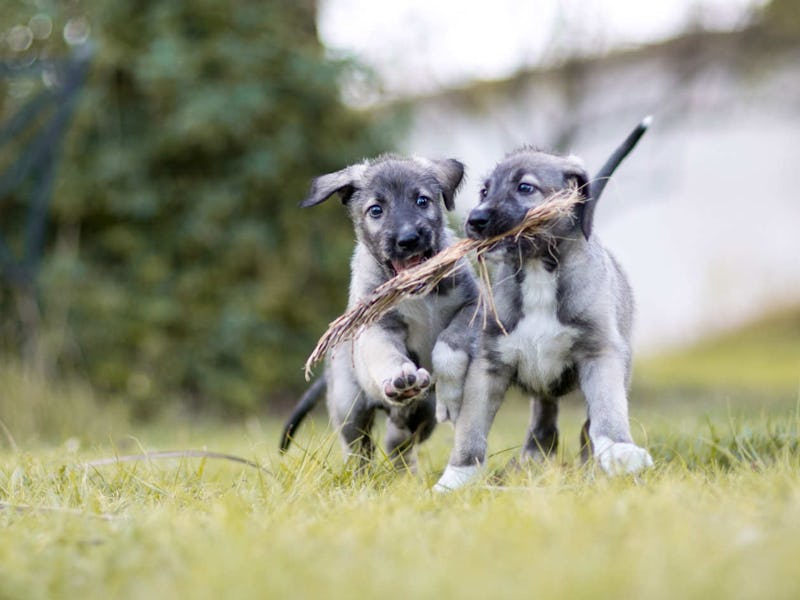Irish wolfhound twin puppies have been born in South Africa, the very first recorded case of twin dogs. Yes, something that you thought was pretty damn cute has managed to get even cuter. Named Romulus and Cullen, the pups are the only scientifically proven instance of animal twins besides humans and nine-banded armadillos.
Hold on a second, you might be wondering: How are these adorable little pups the first dog twins?
Veterinarian Kurt de Cramer discovered the twins when he was investigating their mom’s uterus and found an unusual bulge. Turns out the pups were both attached with their umbilical cords to the same placenta. Normally, each puppy in a litter has its own placenta, so de Cramer had a suspicion that something unusual was going on.
Genetic testing published in the journal Reproduction in Domestic Animals revealed that the puppies had identical DNA profiles, making them monozygotic twins. When a monozygotic (identical) twin develops, one zygote splits and forms two embryos. This division of a single fertilized egg then typically results in the development of two fetuses sharing a placenta — just like these puppies.
These puppies aren’t completely identical because they have subtle differences in markings. But this doesn’t make it any less true that they are twins — de Cramer told the BBC that we could compare these small digressions in their fur as we would human freckles or fingerprint patterns. While identical twins have the same genes, these genes can still be expressed differently.
Typically placenta-sharing puppies are unable to survive because of complications that arise relating to nutrient and oxygen supply. This underscores these animal’s uniqueness — while plenty of animals may look seemingly exactly alike (hello sheep) that definitely does not make them twins.
Sure, puppies aren’t genetically tested often, so it’s difficult to tell whether this is the first time this has ever happened, but it’s definitely rare, and c’mon, how cute are they?
“We are so lucky that this bitch ended up having a C-section,” said co-author Carolynne Joonè. We are indeed.
